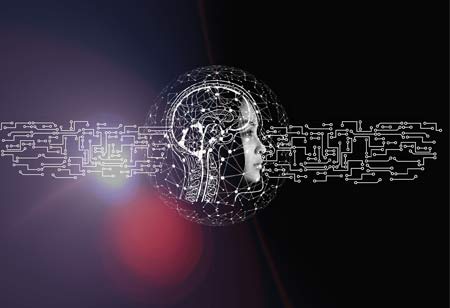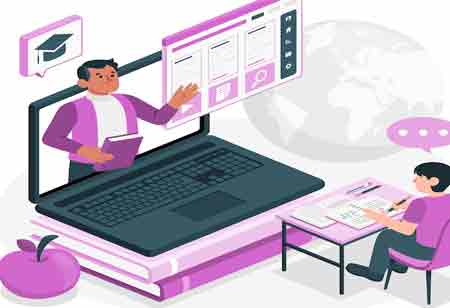THANK YOU FOR SUBSCRIBING
Be first to read the latest tech news, Industry Leader's Insights, and CIO interviews of medium and large enterprises exclusively from Education Technology Insights
Technology Trends in K-12 Learning
From improving safe internet access for K-12 students to providing AI-powered or AR/VR-powered learning to compensate for a proper classroom experience, innovations are making waves around the world.

By
Education Technology Insights | Friday, March 17, 2023
Stay ahead of the industry with exclusive feature stories on the top companies, expert insights and the latest news delivered straight to your inbox. Subscribe today.
Education technology has the potential to help remove current barriers to providing high-quality education around the world. Education technology will allow students to broaden their imaginations and grasp concepts more effectively.
FREMONT, CA: By 2026, it is estimated that the global e-learning market evaluation will hit the 370 bn USD mark and analysis suggests that implementing a proper mix of gaming and reading in the e-learning scenarios produces preferable results. In some areas of the world, students have access to learning apps and devices as soon as they begin school, however in other parts of the world, issues are being caused by economic inequality and varying levels of internet penetration.
From improving safe internet access for K-12 students to providing AI-powered or AR/VR-powered learning to compensate for a proper classroom experience, innovations are making waves around the world. The facilitation of digital learning tools, cybersecurity, and interactive learning programs for K–12 learners are some of the challenging aspects.
As a result, K-12 EdTech has enormous potential for the future, and with the rising popularity of eLearning technologies like AI, VR, AR, Big Data, and open learning, the sector is about to undergo a considerable upheaval.
Understanding the Ecosystem with K-12 EdTech
The government officials and local infrastructure connect the technology with the end user or the education stakeholders while it remains on the vendor or developer side. While discussing the K-12 EdTech, the industry must accommodate young and developing learners, the type of material, the UI of the finished product, and the value proposition changes considerably. Therefore, rather than just providing extensive and carelessly tech-powered learning solutions, the businesses in the sector must develop proper protocols and EdTech strategies to address the problems that students face. The sector must also take into account how easily teachers, parents, and school administrators can use the software solutions.
K-12 Educational Trends
AR and VR Utilisation in Learning
By 2023, the industry for the implementation of AR and VR in education is expected to grow at a CAGR of 16.2 per cent and reach a value of 19.6 billion USD. The increasing need to provide personalised learning experiences and provide diverse education to students from a young age has propelled the technologies as a sure-fire trend to watch in K–12 EdTech this year. Previously used for higher education and simulation of surgeries and various other medical treatments.
AR and VR Use Cases in K-12 EdTech
• A better visual simulation will help in understanding the structures and landscapes
• Natural events can be represented virtually and visually, among other things
• Demonstration using images
Cybersecurity and Cloud
The market for cloud computing in education is predicted to expand at a CAGR of 25.6 per cent, and current trends indicate that cloud computing will play a significant role in supporting EdTech in K–12 education. The main forces behind the trend are significant demands for decreasing management's workload, competitiveness among academic institutions and learning beyond the classroom boundaries.
Notable Use Cases of Cloud in K-12 EdTech
• Cloud-based ERP systems
• Smooth and effortless connectivity
• Scalability
Recent developments in cloud computing and cloud-based services necessitate a review of security measures to make sure that there are no weak places throughout the entire network and to fend off malicious data theft and cyberattacks. Given that more and more educational institutions will look forward to having a secure ecosystem, an increase in the use of cloud-based services will also fuel the cybersecurity trends.
AI-Powered Learning
The global AI adoption is expected to be at 47 per cent by 2023, and the overall valuation will reach the 3.68 bn USD mark. Currently, teachers spend 49 per cent of their working hours managing the different aspects of their student's education, behavioural development, and in direct interaction. The use of AI will enable teachers to provide more targeted and customised education and assessment modules for students with various learning and comprehension capacities.
AI Use Cases in K-12 EdTech
• Providing individualised instruction
• Improving students’ academic standards
• Multi-lingual translators
• Augmenting the expertise and experience of educators
Digital learning Tools
During the pandemic, digital learning tools took on the responsibility of facilitating education through online classes all over the world. These tools not only provided easy ways for instructors and students to connect and enabled real-time collaboration for working on projects, but they also sparked numerous significant changes in the K–12 education sector.
Facilitated by digital learning tools, nearly 75 per cent of the K-12 educators used some form of remote teaching, whereas, 11 per cent of them used this means only since the pandemic.
Use Cases of Digital Learning Tools in K-12 EdTech
• Participatory learning
• Written documents and digital presentations
• Accessing educational resources online
Personalised learning Experiences
Technology like artificial intelligence (AI), cloud computing, and digital learning tools enable teachers to deliver carefully curated learning materials to students in first and second grade, who are still experiencing the educational environment with all of their attention. Students often have preferences for particular subjects, topics, and ways of learning and expressing themselves as they grow.
Teachers can accomplish more in the personalised learning space by using digital learning tools to generate digital profiles of students with insights into their strengths and weaknesses and create a holistic learning module accordingly.
Notable Use Cases in K-12 EdTech
• Customised instruction
• Additional support for educators
• Education and learning based on interests
• Improved student engagement and learning
As a result of the widespread adoption of technology by the education sector in the upcoming year, the education industry is probably going to undergo significant transformation. This would improve both the educational standards and the student's knowledge, which would improve both their futures and the future of the nation.
I agree We use cookies on this website to enhance your user experience. By clicking any link on this page you are giving your consent for us to set cookies. More info

However, if you would like to share the information in this article, you may use the link below:
k12-europe.educationtechnologyinsightsapac.com/news/technology-trends-in-k12-learning--nid-2234.html






